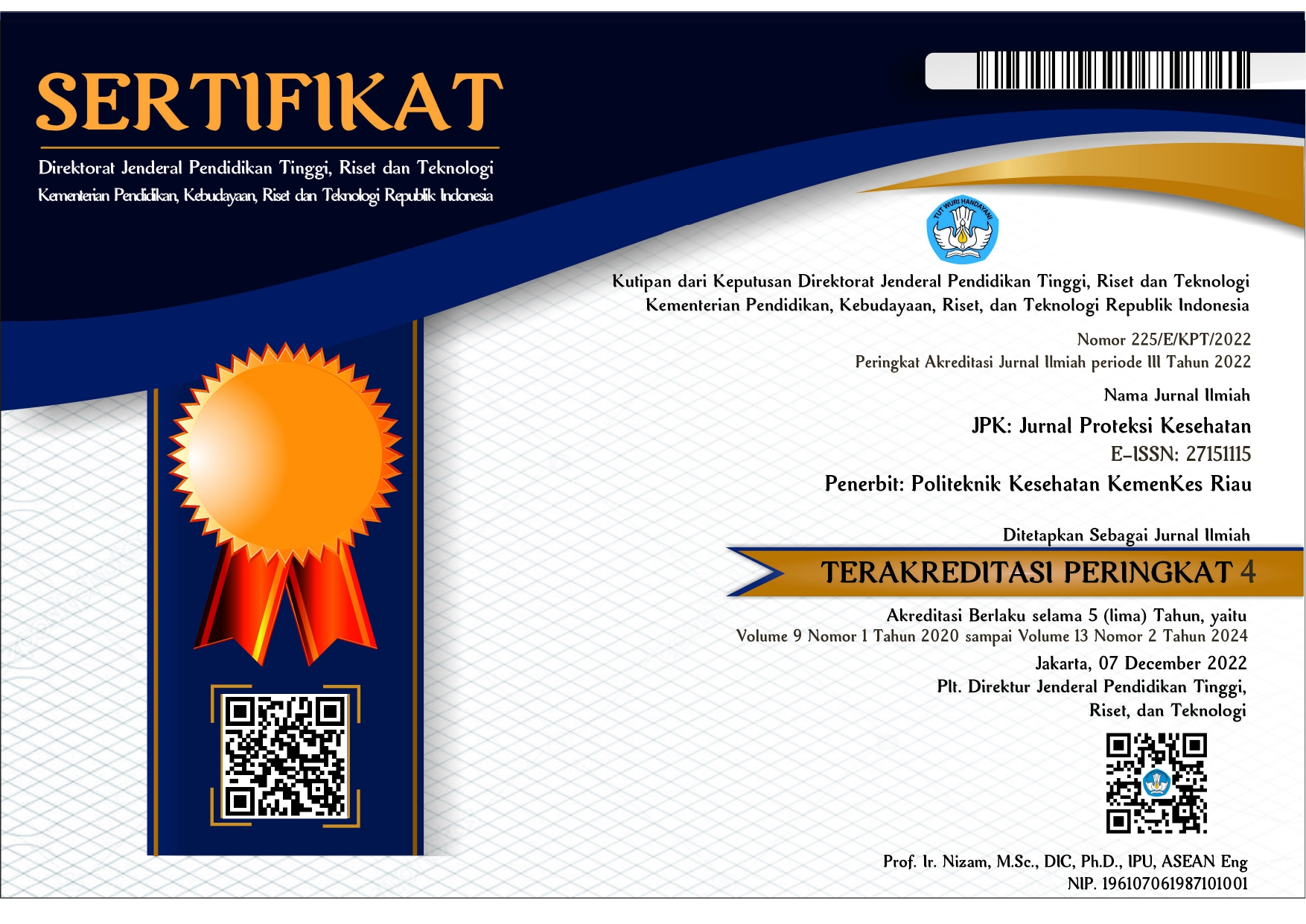Antibacterial Activity of Edible Film with the Addition of Betel Leaf Extract (Piper betle) againts Streptococcus mutans
Abstract
Edible films are generally used as packaging materials to protect food and can be eaten with the packaged product. In addition, the edible film can be affixed to the tongue, so that it immediately melts in the mouth. Products like this can be added to betel leaf extract which can function as an oral antiseptic, that can inhibit the growth of Streptococcus mutans. The purpose of this study was to obtain the results of the inhibition of edible film added with water extract of betel leaf with concentrations of 30%, 50%, and 70%. The research was conducted through experiments in the laboratory by measuring the diameter of the inhibition zone that occurred. The diameter of the average inhibition zone against Streptococcus mutans produced by edible film added 30%, 50%, and 70% aqueous extract of betel leaf, respectively, was 14.36 mm, 18.17 mm, and 24.74 mm. An edible film added water extract of betel leaf can inhibit Streptococcus mutans.
References
[2] D. Huri and C. N. Fithri, “Pengaruh Konsentrasi Gliserol dan Ekstrak Ampas Kulit Apel terhadap Karakteristik Fisik dan Kimia Edible Film,” J. Pangan dan Agroindustri, vol. 2, no. 4, pp. 20–40, 2014.
[3] W. D. Agus, “Perbedaan Khasiat Antibakteri Bahan Ligasi Antara Hydrogen Peroksida 3% dan Infusa Daun Sirih 20% terhadap Bakteri Mix,” Maj. Kedokt. Gigi, vol. 38, no. 1, 2005.
[4] M. R. Darmayanti, Khasiat dan Manfaat Daun Sirih. Jakarta: Agromedia Pustaka, 2003.
[5] A. Gunawan and Z. Eriawati., “Pengaruh Pemberian Ekstrak Daun Sirih (Piper sp.) terhadap Pertumbuhan Jamur Candida albicans,” Proseding Semin. Nas. Biot., 2015.
[6] R. Marjoni, Dasar-Dasar Fitokimia untuk Diploma III Farmasi. Jakarta: Trans Info Media, 2016.
[7] T. Yuniarti, Media dan Regensia. Kendari: Poltekkes Kendari, 2014.
[8] D. Kurniawati, I. Rukmi, and A. L. Tri, “Aktivitas Antimikroba Kombinasi Rebusan Daun Sirih Hijau (Piper betle) dan Daun Sirih Merah (Piper crocatium) Terhadap Candida albicans,” J. Biol., vol. 2, no. 1, pp. 55–62, 2014.
[9] R. Iqhasari, “Uji Daya Hambat Rebusan Daun Sirih Hijau (Piper betle L.) Segar terhadap Pertumbuhan Candida albicans,” Politeknik Kesehatan Kendari, 2017.
[10] M. Radji, Buku Ajar Mikrobiologi Panduan Mahasiswa Farmasi dan Kedokteran. Jakarta: Penerbit Buku Kedokteran EGC, 2011.
[11] D. Saraswati, “Pengaruh Konsentrasi Ekstrak Daun Sirih Terhadap Daya Hambat Escherichia Coli,” J. Heal. Sport, vol. 3, no. 2, 2011.
[12] G. F. Brook, S. B. Janet, and A. M. Stephen, Medical Microbiology. Jakarta: Salemba Medika, 2005.












